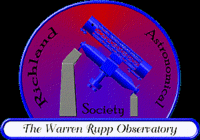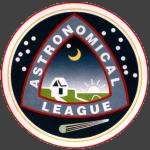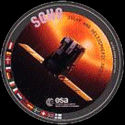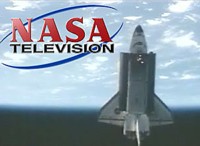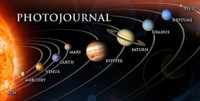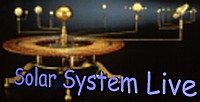February 2009

Previous Editions of the M111:
M111 Fall 07
M111 Late Fall 07
M111 Dec 2007
M111 Jan 2008
M111 April 2008
June/July 2008
August 2008
September 2008
October 2008
December 2008
Greetings...
Welcome all ye weary travelers to a new type of M111... "On Line"! Thanks to the magic of the internet, it's now easier than ever to keep up a new newletter each month. The only thing that isn't easy is getting new content! Any time you have something you'd like to offer - be it a story of how you first got started in astronomy, a star party you just attended, a telescope you just bought, or your favorite constellation, just drop me a line with the story included and I'll be sure to get it posted!
In the meantime, I do my best to make sure everyone is aware of our newsletter. If for some reason you need a hardcopy and cannot print one yourself, please feel free to contact me at 419-845-2629 and I will be happy to send you one via regular postal mail. As always, if you have something to contribute? Let me know!
Back to top...
Words From Da' Prez
 Greetings, Fellow RAS Members!
Greetings, Fellow RAS Members!
Wow! What a winter we've had... When we weren't getting enough snow to bury the dome we had enough cold to keep the brass monkeys hiding inside! Thanks to the combination of the two the Observatory is currently enjoying its annual facility shutdown, which means a nature hike if you choose to visit before it opens again. With that in mind, I think you'll thoroughly enjoy the Feature Article this month - "Oh, no, not the plumbing too!" - Severe Space Weather by Dr. Tony Phillips. It's a great look at what happens when your neighborhood has a power outage, you can usually be thankful that at least your toilet works. However, if the power outage is widespread enough and of long enough duration, that may not be the case. Find out what could happen to our high-tech civilization in the case of a “hundred-year” super solar storm!
It's also time to look forward to the end of those winter storms - because in just a few short weeks the Observatory will have its first 2009 Public Night! That's right... March is back again! As always, we'll begin the evening with our monthly club meetings at around 7:00 pm. Please take the time to review the "January Meeting Minutes" so when you arrive you're ready to discuss any old business and put new business forward in an efficient manner. Things are going great, so the business end of the meetings can be handled effectively and we can get right to the fun stuff!
Speaking of effective, I'd like to once again express my appreciation to Dave Mohrbacher for keeping up the monthly minutes and for making sure our form 990 was filed early and perfectly. My thanks also go to Keith Moore for getting our club roster updated as well. Please double check and make sure all your information is correct! I would also like to express my appreciation to all of our key outreach players for 2008 for doing such a great job and I want to tell you how proud I am to be able to present you with your award pins each year! (and there are some of you who haven't got yours yet... i'll find you!)
For those of you who were not aware, our key outreach people also played another very important role here recently. During January we had the opportunity to meet with the representatives of the Fran and Warren Rupp Foundation. During the meeting we were able to tell them about all of the wonderful things we'd done and our plans for the future. Thanks to the generosity of the Rupp Family, we were awarded a grant to have the 31" mirror recoated! No goofing around here, folks. Even as this is being written, the works are already in motion. The call has gone out for help and if everything goes successfully the whole process should be done and the mirror re-coated and re-installed before our March opening! Once again, our many, many thanks to the wonderful ladies at FPA and the Rupp Family for their continued support!!
For now? IYA 2009 is here... If you'd like to get involved in outreach, don't hesitate to contact me! During our March public night we'll be taking a look at GLOBE at Night, Radio Skies and Earth Hour. There will be many opportunities over the coming months to do outreach in the classroom and other activities, too! Enjoy the many benefits and rewards of being part of this awesome club...
And keep shinin' on!
~Tammy
Back to top...
Severe Space Weather - By Dr. Tony Phillips
 Did you know a solar flare can make your toilet stop working?
Did you know a solar flare can make your toilet stop working?
That's the surprising conclusion of a NASA-funded study by the National Academy of Sciences entitled Severe Space Weather Events—Understanding Societal and Economic Impacts. In the 132-page report, experts detailed what might happen to our modern, high-tech society in the event of a “super solar flare” followed by an extreme geomagnetic storm. They found that almost nothing is immune from space weather—not even the water in your bathroom.
The problem begins with the electric power grid. Ground currents induced during an extreme geomagnetic storm can melt the copper windings of huge, multi-ton transformers at the heart of power distribution systems. Because modern power grids are interconnected, a cascade of failures could sweep across the country, rapidly cutting power to tens or even hundreds of millions of people. According to the report, this loss of electricity would have a ripple effect with “water distribution affected within several hours; perishable foods and medications lost in 12-24 hours; loss of heating/air conditioning, sewage disposal, phone service, fuel re-supply and so on."
“The concept of interdependency,” the report notes, “is evident in the unavailability of water due to long-term outage of electric power—and the inability to restart an electric generator without water on site.”
It takes a very strong geomagnetic storm to cause problems on this scale—the type of storm that comes along only every century or so. A point of reference is the “Carrington Event” of August-September 1859, named after British amateur astronomer Richard Carrington who witnessed the instigating solar flare with his unaided eye while he was projecting an image of the Sun on a white screen. Geomagnetic storms triggered by the flare electrified telegraph lines, shocking technicians and setting their telegraph papers on fire; Northern Lights spread as far south as Cuba and Hawaii; auroras over the Rocky Mountains were so bright, the glow woke campers who began preparing breakfast because they thought it was morning!
“A contemporary repetition of the Carrington Event would cause … extensive social and economic disruptions,” the report warns. Widespread failures could include telecommunications, GPS navigation, banking and finance, and transportation. The total economic impact in the first year alone could reach $2 trillion (some 20 times greater than the costs of Hurricane Katrina).
The report concluded with a call for infrastructure designed to better withstand geomagnetic disturbances and improvements in space weather forecasting. Indeed, no one knows when the next super solar storm will erupt. It could be 100 years away or just 100 days. It’s something to think about … the next time you flush.
One of the jobs of the Geostationary Operational Environmental Satellites (GOES) and the Polar-orbiting Operational Environmental Satellites (POES) operated by NOAA is to keep an eye on space weather and provide early warning of solar events that could cause trouble for Earth.
You can keep an eye on space weather yourself at the National Weather Service's Space Weather Prediction Center, www.swpc.noaa.gov. And for young people, space weather is explained and illustrated simply and clearly at the SciJinks Weather Laboratory, scijinks.gov/weather/howwhy/spaceweather.
This article was provided by the Jet Propulsion Laboratory, California Institute of Technology, under a contract with the National Aeronautics and Space Administration.
Back to top...
Look Into the Cat's Eye

Are you ready for more stereo vision? This haunting Hubble Telescope image has been visualized for dimension by the one and only Jukka Metsavainio and gives us a look at one of the most complex planetary nebulae ever photographed. Inside NGC 6543 - nicknamed the "Cat's Eye Nebula" - the Hubble has revealed delicate structures including concentric gas shells, jets of high-speed gas, and unusual shock-induced knots of gas… and thanks to Jukka's "magic vision" we're able to take a look into the Cat's Eye as it might appear in dimension. Step inside and let's learn more…
When Jukka produces an image, it's more than just a clever Photoshop "trick". Hours of study must go into each image, because the light is acting differently in each part of the nebula. To make these images work correctly, Jukka must understand which stars are causing the ionization, which stars are nearer and further from our point of perspective and so on. Each type of image is totally unique and what makes dimension work for a reflection nebula won't work for an emission nebula. Says Jukka; "To be able to make those stereo pairs, one have to learn lots of things about the targets, and beside that, study the actual image more deeply than usual. Star distances must be measured by the size and the color. For example, stars with yellowish hue must be in or behind the nebulosity, white/blue ones are front of it."
Because dimension will appear reversed by the method you choose to use to view these images, Jukka makes two versions. One is parallel vision - where you relax your eyes and when you are a certain distance from the monitor screen the two images will merge into one to produce a 3D version. The second - which appears above - is crossed vision. This is for those who have better success crossing their eyes to form a third, central image where the dimensional effect occurs. So, now that you understand the images are a visualization and how they are created, let's take a parallel look…
And now it's my turn to add a little "magic" to what you see.
Estimated to be 1,000 years old, the Cat's Eye is a portrait of a dying star - and quite possibly an unresolved double-star system. According to research, the dynamical effects of two stars orbiting one could very well be the cause of the complicated and intricate structures revealed here - structures normally not seen in planetary nebulae. When NGC 6543 was first observed spectroscopically, it showed the presence of emission lines, an indicator of multiple stars, but also an indictor of diffuse gas clouds.
As studies progressed, more hypothesis about the NGC 6543's structure began to emerge. Perhaps a fast stellar wind from the central star created the elongated shell… It could be the companion star is emitting high-speed jets of gas that lie at right angles to the equatorial ring… Maybe the stellar wind has carved out the inner structure of the nebula are there are more than one there? Says L.F. Miranda; "The velocity field of NGC 6543 shows the existence of two concentric ellipsoidal shells in the nebula. The two shells likely represent the inner and outer surface layers of a geometrically 'Thick Ellipsoid' (TE) which constitutes the basic structure of NGC 6543."
Even more research ensued, and with it came the twin jet theory and the ejection of materials spaced over intervals of time - like cosmic smoke rings being puffed off at perfect intervals. According to Bruce Balik; "Hubble archival images of NGC 6543 reveal a series of at least nine regularly spaced concentric circular rings that surround the famous nebular core, known as the Cat's Eye Nebula. The rings are almost certainly spherical bubbles of periodic isotropic nuclear mass pulsations that preceded the formation of the core. Their ejection period is consistent with a suggestion that quasi-periodic shells are launched every few hundred years in dust-forming asymptotic giant branch (AGB) winds but not consonant with the predictions of extant models of core thermal pulses (~105 yr) and surface pulsations (~10 yr)."
To be sure, there are simply a lot of things that we don't know or understand about the Cat's Eye Nebula just yet. It is possible that magnetic activity somewhat similar to our own Sun's sunspot cycle, could be at work here. Says Dr. Balick; "What do the rings imply? Since they're larger than the bright cores of the nebulae that they surround, the rings are almost certainly material ejected episodically before the main and bright core of the nebula formed. This means that the start that ejected the nebulae first quivered and shivered and made these concentric rings. Then something big happened, and the density and mechanism for ejecting the mass changed abruptly. This is when the core of the nebula was formed, typically between 1000 and 2000 years ago. The rhythmic ringing of a dying star is expected as the last of its nuclear fuel is suddenly triggered into ignition by the increasing crush of gravity — much like the juice ejected by squeezing an orange with increasing force. Each expulsion of juice temporarily relieves the internal pressure inside the orange. Similarly, each ejection of mass temporarily stops the combustion of the final dregs of the star's remaining fuel. Why should the pattern of ejection mass change so radically and strongly? We can only conjecture. Its possible that an orbiting star or giant planet falls onto the dying star. It hits the surface with such force that its atoms ignite in a large conflagration. Somehow, the burst of heat drives the remnants of the dying star into space in fantastic patterns."
And we looked right into its eye...
-- From Universe Today, February 8, 2009, Written by: Tammy Plotner
Back to top...
Welcome To Our New Member
 We'd like to welcome our newest members - Tim Reave and his son, Seth! If you're thinking about joining, come on in! Right now, your $40 membership gets you in for the 2009 year and this means membership to the Astronomical League, the Richland Astronomical Society and Friendly House... the rest goes to covering our electricity and insurance. Our on-line application for membership is now currently updated and running smoothly! In the meantime, if you prefer to print off regular registration and bring it with your dues to our regular monthly meetings. If you can't find what you're looking for, please feel free to email me!
We'd like to welcome our newest members - Tim Reave and his son, Seth! If you're thinking about joining, come on in! Right now, your $40 membership gets you in for the 2009 year and this means membership to the Astronomical League, the Richland Astronomical Society and Friendly House... the rest goes to covering our electricity and insurance. Our on-line application for membership is now currently updated and running smoothly! In the meantime, if you prefer to print off regular registration and bring it with your dues to our regular monthly meetings. If you can't find what you're looking for, please feel free to email me!
OPT Rewards
 Are you hankering after a new telescope? Do you have an eyepiece you've always wanted? Got your eye on an astronomy book? Don't shop around... Shop at OPT!
Are you hankering after a new telescope? Do you have an eyepiece you've always wanted? Got your eye on an astronomy book? Don't shop around... Shop at OPT!
Oceanside Photo and Telescope is more than just one of our Hidden Hollow sponsors - they are also a source of our club rewards program. Not only is OPT one of the country's largest and most reputable telescope dealers, but they're also offering a great discount to WRO members! Take a look around on the website. When you find something you want to order and go to check out, simply put "Warren Rupp Observatory" into the club affiliation box and... poof! You automatically get a discount. There's only one thing. The discount doesn't show until you get your final bill. How much? It could be just a few dollars and it can be as much as 20%! Now that's using a real rewards program!
For everyone, I now have a real OPT Rewards Card for you! For those who were at the January meeting, you have your card. If you weren't there, please ask next time you see me, ok? I'll keep them in my car so I don't forget!
Back to top...
Observing Comet Lulin....
 For those who don't mind getting up early, be sure to keep your eye on the mighty Comet C/2007 N3 Lulin! If you have trouble reading star charts - don't worry. It's a whole lot easier to find in binoculars than you might think. All you need to do is just know how to identify a few bright stars! If you live in the northern hemisphere, about an hour (even two if you have a clear skyline) go out and identify Scorpius rising to the southeast - or Virgo high in the south, if you prefer. (For other locations, simply follow the ecliptic plane.) Between the two constellations you'll see bright optical double star Alpha Librae - Zubenelgenubi. You'll know if you have the right star because it will appear as two close stars in your binoculars. As of the morning of February 6th, Comet Lulin appeared in the 2 o'clock position with Zubenelgenubi in the field and it's slowly headed towards Spica - Alpha Virginis. Remember as each successive day passes to start at Zubenelgenubi (it's about a hand span east-southeast of Spica) and move the binoculars slowly towards Spica until you spot it. It will appear as a small, faint fuzzy in 5X30 binoculars and elongated in 16X60s. Even with telescopes as small as 114mm in aperture, it's easy to make out that signature tail! Don't wait too long to capture it, though… Because it won't be long until the Moon is going to interfere and make this 7th magnitude comet far more difficult to spot!
For those who don't mind getting up early, be sure to keep your eye on the mighty Comet C/2007 N3 Lulin! If you have trouble reading star charts - don't worry. It's a whole lot easier to find in binoculars than you might think. All you need to do is just know how to identify a few bright stars! If you live in the northern hemisphere, about an hour (even two if you have a clear skyline) go out and identify Scorpius rising to the southeast - or Virgo high in the south, if you prefer. (For other locations, simply follow the ecliptic plane.) Between the two constellations you'll see bright optical double star Alpha Librae - Zubenelgenubi. You'll know if you have the right star because it will appear as two close stars in your binoculars. As of the morning of February 6th, Comet Lulin appeared in the 2 o'clock position with Zubenelgenubi in the field and it's slowly headed towards Spica - Alpha Virginis. Remember as each successive day passes to start at Zubenelgenubi (it's about a hand span east-southeast of Spica) and move the binoculars slowly towards Spica until you spot it. It will appear as a small, faint fuzzy in 5X30 binoculars and elongated in 16X60s. Even with telescopes as small as 114mm in aperture, it's easy to make out that signature tail! Don't wait too long to capture it, though… Because it won't be long until the Moon is going to interfere and make this 7th magnitude comet far more difficult to spot!
From Weekend SkyWatcher's Forecast, Published in Universe Today, Written by Tammy Plotner
Back to top...

